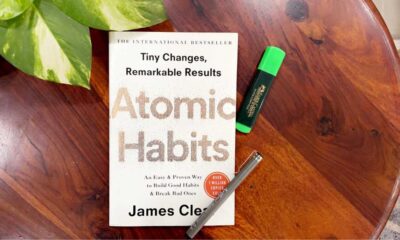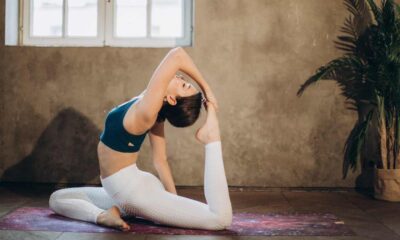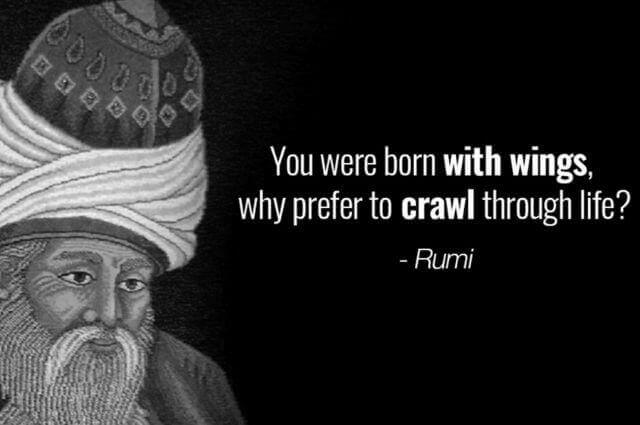Yoga
Top 5 Breathing Exercises For Stress Relief

Deep breathing is one of the best ways to lower stress and reduce anxiety from the body. This is because here we have a list of top 5 breathing exercises that everyone should try.
Breathing or Pranayama is a word from the Sanskrit language which is further made up of 2 words Prana (Lifeforce) + Ayama (Extension).
In general, pranayama is the conscious awareness that gives shape to our thoughts, emotions, and energizes our body. It flushes out the waste from your body and mind.
Pranayama is the fourth limb in Ashtanga yoga practice after Yama, Niyama, and Asana, which prepare us for the higher stages (Dhyan, Dharna, and Samadhi).
Pranayama itself consists of four stages:
1. Puraka (inhalation)
2. Abhyantara Kumbhaka (the mindful retention/pause after inhalation)
3. Rechaka (exhalation)
4. Bahya Kumbhaka (the mindful retention/pause after exhalation)
Each stage of pranayama has it’s own importance to enhance physical awareness. Retention/pause of breathing after each inhalation and exhalation helps to distribute the life energy throughout your body.
Over time, our breathing process has become short and shallow, which is impacting our overall health. With the following pranayama practices, you can get beneficial results.
5 Breathing Exercises for Stress relief:
1. Bhastrika Pranayama or Bellows Breathing
Bhastrika Pranayama or the Bellows Breathing is a forceful inhalation and exhalation breathing exercise which helps to clear your nadis and energizing your body.
How To Practice?
- Sit in a simple crossed leg position or Vjrasana or lotus position with your back straight. You can use a soft cushion under you to make you more comfortable.
- Take 2-3 deep breaths through your nose to prepare yourself.
- After that take a deep breath, fill your lungs, and exhale forcefully.
- Follow it up by inhaling and exhaling forcefully in the same manner.
- Your breath should come from your diaphragm, and your belly must move in and out as you breathe. The rest of your body should be still.
- Do it for 5-6 times, then relax with natural breathing, and again do 5-6 times. Do at least 3 rounds (each round should consist of 5-6 times forceful inhalation and exhalation) of Bhastrika. When you are relaxing, observe the sensations in your body and mind.
Benefits Of Bhastrika Pranayama
- Bhastrika Pranayama strengthens your lungs.
- Calms your mind.
- Purifies your breath and improves your heart health.
- Cures a common cold and improves your immunity.
Contraindications
Bhastrika should not be practiced by pregnant or menstruating women, individuals with high blood pressure, heart disease, hernia, and anyone at risk for stroke. Those suffering from asthma or chronic bronchitis should practice Bhastrika only under the guidance of an experienced teacher.
2. Kapalbhati Pranayama or Skull Shining Breathing
Kapalbhati (Kapal means Skull + Bhati means Shine) Pranayama is also known as the Skull Shining Breath. It is a ‘shat’ kriya (one of the 6 cleansing process) that flushes out toxic air from your body.
How To Practice?
- Sit in Sukhasana or Vjrasana, place your palms on your knees.
- Inhale deeply through your nose, filling your lungs with air. Breathe in calmly and consciously.
- Place your hand on the stomach and feel the muscles contracting.
- As you relax from the contraction, exhale in a short and quick burst. There will be a hissing sound while you do so. In this practice, inhalation will be automatic but exhalation will be forceful.
- Practice one round of Kapalbhati that consists of inhaling and exhaling 20 times. After one round, close your eyes in Sukhasana and observe your body. Do at least 3 rounds daily to get maximum benefits.
Benefits Of Kapalbhati Pranayama
- Improves the functioning of your liver and kidneys.
- Improve your face glow and helps to get rid of dark circles.
- Eliminates acidity and gas-related problems.
- Improves your memory and concentration power.
- Helps to reduce weight
Contraindications
Kapalabhati should not be practiced by pregnant or menstruating women, individuals with high or low blood pressure, heart disease, hernia, gastric ulcer, epilepsy, vertigo, migraine headaches, and for anyone who has undergone recent abdominal surgery.
3. Bhramari Pranayama or Humming Bee Breath
Bhramari Pranayama is named after an Indian black bee called the Bhramari. It is a simple but powerful breathing technique to de-stress.
As suggested by its names, in this exercise, you have to exhale and create a humming sound like a bee. Let see how to do it.
How To Practice?
- Sit straight in a position of your choice. Keep a gentle smile on your face.
- Close your eyes and observe your body.
- Place your index fingers on your ears (outside of the ear).
- Take a deep inhalation. While you exhale, press your index fingers and make a humming sound. .similar to a bee.
- Continue the same breathing pattern about 4-5 times.
Benefits Of Bhramari Pranayama
- Treats hypertension and reduces anger and anxiety.
- Help reduce migraines and build confidence.
- Reduces blood pressure and is good for Alzheimer’s disease.
- Calms your nerves and reduces frustration.
- Strengthens and improves the voice
Contraindications
Bhramari should not be practiced by pregnant or menstruating women, individuals with extremely high blood pressure, epilepsy, chest pain, or an active ear infection. Bhramari should not be practiced in a supine position (lying down).
4. Anulom Vilom or Alternate Nostril Breathing
Anulom Vilom or Alternate Nostril Breathing is a technique through which you can cleanse and balance three of your major nadis left (Ida Nadi), right (Pingla Nadi )and central (Sushumna Nadi).
How To Practice?
- Sit in Padmasana, Sukhasana, or Vajrasana. Keep your back straight and your chin slightly tucked in towards your chest. Close your eyes.
- Place your left palm on your left knee and let it face upwards in the Gyan mudra (here you can find different mudras).
- Now place your right thumb on your right nostril. Inhale deeply and silently through your left nostril.
- After inhalation, press the last two fingers of your right hand on your left nostril. Exhale through your right nostril – slowly, deeply, and silently.
- Then, inhale through the right nostril. Press the side of your right nostril with your right thumb and exhale through your left nostril. That completes one round of Anulom Vilom.
- Do about 5 rounds initially, and then increase it as per convenience.
[stextbox id=’alert’ bgcolor=’faf7b1′ bgcolorto=’f5d693′ image=’null’]The favorable ratio for Anuloma Viloma is 1:3:1. That means if you take 4 second time in inhalation (Puraka), then take 4 sec time for exhalation (Rechaka) and hold the breath in for 12 sec (Kumbhaka). But if you are a beginner then start with 4:4:4 ratio i.e take 4-4 sec time in Puraka, Rechaka, and Kumbhaka.[/stextbox]
Benefits Of Anulom Vilom
- Gives physical, mental, emotional balance.
- It improves your metabolism and controls diabetes.
- Reduces arthritis and sinusitis.
- The technique solves eye and ear issues.
- Cures allergies and asthma.
- Removes the blockages of the heart and makes it healthy.
Contraindications
Those suffering from heart ailments or having high blood pressure should not hold the breath.
5. Sheetali and Sheetkari Pranayama or Cool Breathing
Sheetali (means cold) Pranayama, also known as a cooling breathing technique that effectively cools the body, the mind, and the emotions.
This practice is very helpful to balance the pitta dosha (the fire element in your body).
How To Practice?
- Sheetali and Sheetkari should be practiced on an empty stomach.
- Choose a comfortable sitting position or you can use a chair.
- Rest your hands on the knees and straighten your spine.
- Gently close the eyes and take 2-3 deep breaths through the nose.
- When you are ready to begin, roll your tongue so that your tongue forms a tube. Inhale through the curled tongue, as if breathing through a straw.
- If you are unable to roll your tongue—Inhale with Sheetkari. Simply flatten the tongue and catch it gently between the teeth, allowing the lips to part slightly and to widen, as when we smile.
- In either variation, inhale completely filling the belly, the ribs, and the chest, noticing the cool quality of the air as it enters the body.
- At the top of the inhale, draw the tongue in, close the mouth, and hold the breath for a few moments—just as long as feels natural—without any strain. Then, slowly exhale through the nostrils. This completes one round of cooling breath.
- Continue for 5-7 rounds in the beginning.
Benefits of Sheetli/Sheetkari Pranayama
- Balances excess pitta and clears excess heat.
- Kindles the digestive fire and promotes digestion.
- Soothes inflammatory skin problems.
- Reduces fever.
- Enhances immunity.
- Alleviates excess hunger and thirst.
- Reduces blood pressure.
Contraindications
Sheetali and Sheetkari should be avoided by individuals with low blood pressure, respiratory disorders (such as asthma, bronchitis, or excessive mucus), and anyone with chronic constipation. It should not be practiced where there is heavy environmental pollution.
Are you practicing any type of Pranayama and experiencing the benefits? Share in the comment section.
-

 Lifestyle3 months ago
Lifestyle3 months ago7 Daily Habits to Elevate Your Dental Care Routine
-

 Lifestyle3 months ago
Lifestyle3 months agoBenefits Of Amla Juice For Weight Loss
-

 Books2 months ago
Books2 months ago10 Life-Changing Lessons from ‘Atomic Habits’ by James Clear
-

 Growth2 months ago
Growth2 months agoThe Hero’s Journey: Transformative Questions for Success?
-

 Relationship3 months ago
Relationship3 months agoMemorial Tree for a Beloved: Celebrate the Legacy of a Life
-

 Mental Health3 months ago
Mental Health3 months agoBenefits of Undergoing Genetic Testing for Mental Health
-

 Growth2 months ago
Growth2 months agoHow Cognitive Biases Affect Our Decision-Making Process
-

 Travel3 months ago
Travel3 months agoMindset Peaks: The Mental Benefits of Trekking Explained






























